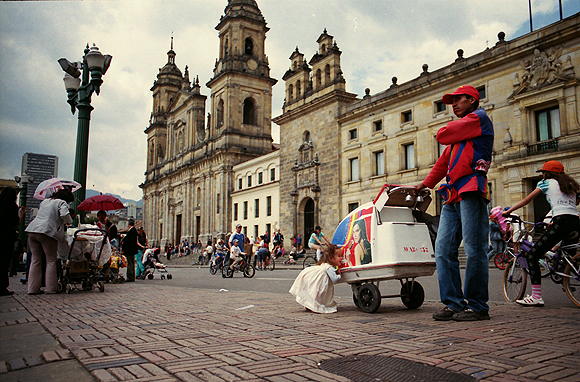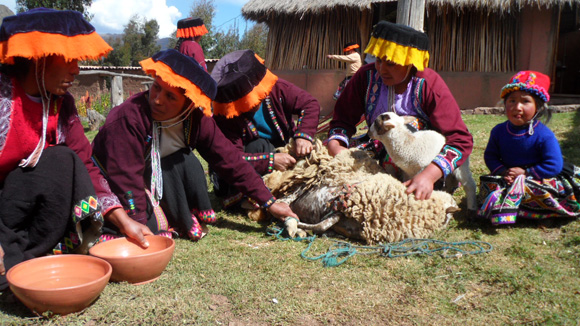Calentado. Heated. Cooking doesn’t get any easier than that. This Colombian staple takes the previous night’s leftovers – seasoned rice, beans, meat, potatoes – and reheats them into one dish. It can be eaten any time of day, but usually for breakfast or brunch. When my husband and I visited friends in Colombia in August 2009, we enjoyed calentado at a local restaurant. It was there I learned how to take dull leftovers and make an extraordinary meal out of them.
Everyone makes calentado a little differently. Here’s one recipe. But the beauty of calentado is that no recipe is necessary.
Take the leftover seasoned rice – I add some sazon when cooking white rice – and reheat it with a bit of oil in a skillet. If your rice isn’t seasoned, perhaps add sofrito. Add the leftover beans (and potatoes if you have them) and meat such as ground beef, chicken, pork, or chorizo. Get everything nice and warm. In another skillet, fry eggs to desired doneness. A little runny is the way to go, in my opinion. Plate the rice/bean/meat mixture and top with the fried egg. Serve with a side of home fries, hash browns, diced tomatoes…whatever you like!
A quick note about Colombia. Growing up in the 1980s, I never thought I’d take a vacation to Bogota, Colombia, of all places in the world. I’m glad that the stigma of traveling to the South American nation didn’t deter me from visiting. The people are so warm. We met so many friendly faces and were surprised by the beauty and sheer size of the city of 10 million people.
Tidbits of information come to mind: on Sundays, certain city roads are shut down to vehicular traffic, allowing pedestrians and bikers to take to the streets. There’s an incredible police presence everywhere you go, which is oddly reassuring. Colombians are so serious about deterring the drug trade that it took a full three hours to get to the gate when leaving to return to the States. And any trip to Bogota is incomplete without a visit to the Chia location for Andrés Carne de Res.
Staying with locals, I was able to pick up on so many cultural wonders unique to Colombia. It’s an incredible country and one that I’d like to explore – Cali, Medellin, Cartagena. I could go on for pages about our visit, and we only scratched the surface in Bogota. Check out more photos of Bogota on my photography site.














